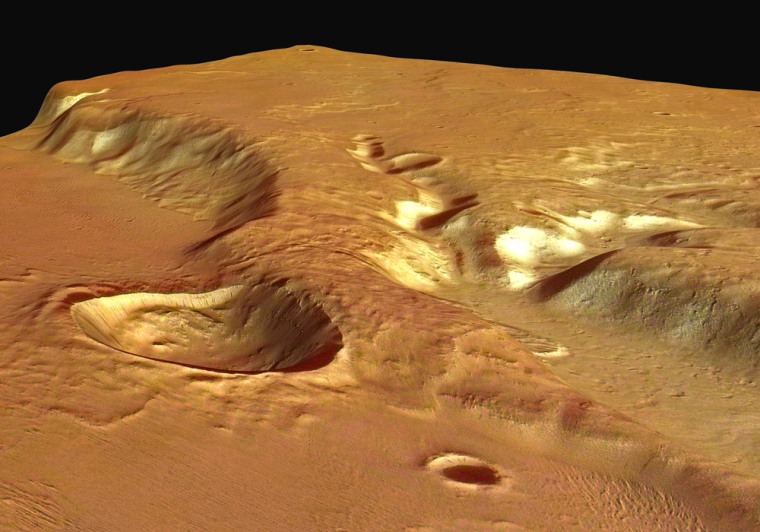New images of Mars show fresh detail of steep and inexplicable slopes.
The Medusa Fossae formation is an extensive area of unknown origin found near a boundary between the highlands and lowlands of Mars. It straddles the Tharsis and Elysium centers of volcanic activity.
This dichotomy boundary is a narrow region separating the cratered highlands, located mostly in the southern hemisphere of the red planet, from the northern hemisphere's lowland plains.
The cratered highlands stand 1.2-3.1 miles (2-5 kilometers) above the lowland plains, so the boundary is a relatively steep slope. The processes that created and modified the boundary remain a major unanswered issues in Mars science, say scientists with the European Space Agency, which released the Mars Express orbiter images last week.
Scientists think the materials that formed Medusa Fossae were deposited by volcanic fireworks known as pyroclastic flows or similar volcanic ash falls. The plateau walls of the volcanic massif are partly covered by lava flows and crossed in places by valleys which were most likely carved by fluvial activity.
The remains of water-bearing inner channels are visible in the center of the valleys and at the bottom of the massif. Superposition of the lobe-fronted pyroclastic flows indicates that the water erosion ended before their deposition, the European scientsits said. Later, a space rock hit near the massif and an ejecta blanket was spread as a flow over parts of the plateau, implying water or ice was present in the subsurface at the time of impact.
